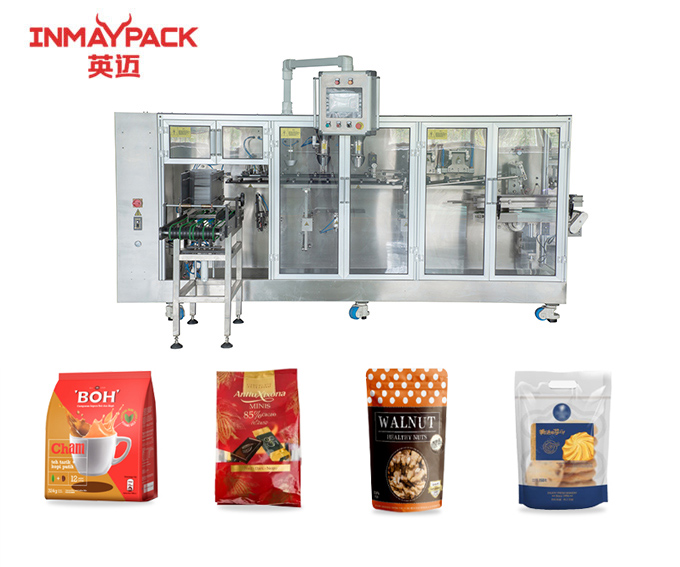Prefabricated bag filling and sealing machines are becoming more and more popular due to their simplicity, ease of use and beautiful finished products. Whether you're new to packaging machinery or considering adding pre-made pouch packaging to your product line, you'll probably be interested in how these machines operate. Let me introduce to you how the filling machine works!

Bag filling and sealing machines can be designed in in-line or rotary layouts. Simplified Rotary Bag Wrapper Grabs preformed bags, fills and seals product at a speed of 200 bags per minute. This process involves moving bags in intermittent rotation to different "stations" placed in a circular arrangement. Each workstation performs different packaging tasks. There are usually 6 to 10 workstations, with 8 being the most popular configuration. The preformed bag filling machine can also be designed as single, two or four lanes, this is how the bag packing process works:
The prefabricated bags are manually loaded by the operator into the bag box at the front of the bag packing machine. Bags are conveyed to the machine by bag feed rollers.
When a proximity sensor detects a bag, the vacuum bag loader picks up the bag and transfers it to a set of grippers that will hold the bag as it travels around the rotary packaging machine to different "stations" .
On models of the bag-optimized filling and sealing machine, these grippers can support up to 10kg continuously. For heavier pouches, a continuous bag support can be added.
If printing or embossing is required, the equipment is placed on this workstation. The bagging and sealing machine can use both thermal and inkjet printers. The printer can place the desired date/batch code on the bag. The embossed option puts a raised date/batch code into the bag seal.
If the bag has a zipper closure, the vacuum cups will open the lower part of the pre-formed bag, while the opening claws will grab the top side of the bag. The open jaws split outward to open the top of the bag, and the prefabricated bag is inflated by a blower. If the bag does not have a zipper, the vacuum pad will still open the bottom of the bag, but will only engage the blower.
There are two sensors near the bottom of the bag to detect the presence of the bag. If no bag is detected, the fill and seal station will not engage. If there is a bag but it is not placed correctly, the bag will not be filled and sealed, but will remain on the rotating equipment until the next cycle.
The product is usually dropped from the bag funnel into the bag by means of a multi-head scale. For powder products, use an auger filler. For liquid bag filling machines, the product is pumped into the bag through a liquid filler with a nozzle. Filling equipment is responsible for correctly measuring and releasing discrete quantities of product to be dripped into each pre-made bag.
Sometimes loose contents need to settle to the bottom of the bag before sealing. This workstation does the trick with a gentle shake of the pre-made bags. Other options at the station include:
The remaining air is squeezed out of the bag by means of two bleed parts before sealing. The heat seal closes on the upper part of the bag. Using heat, pressure and time, the sealant layers of the preformed bag are bonded together to form a strong seam.